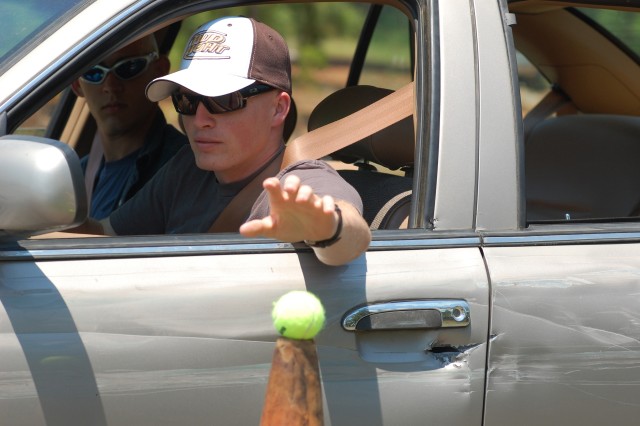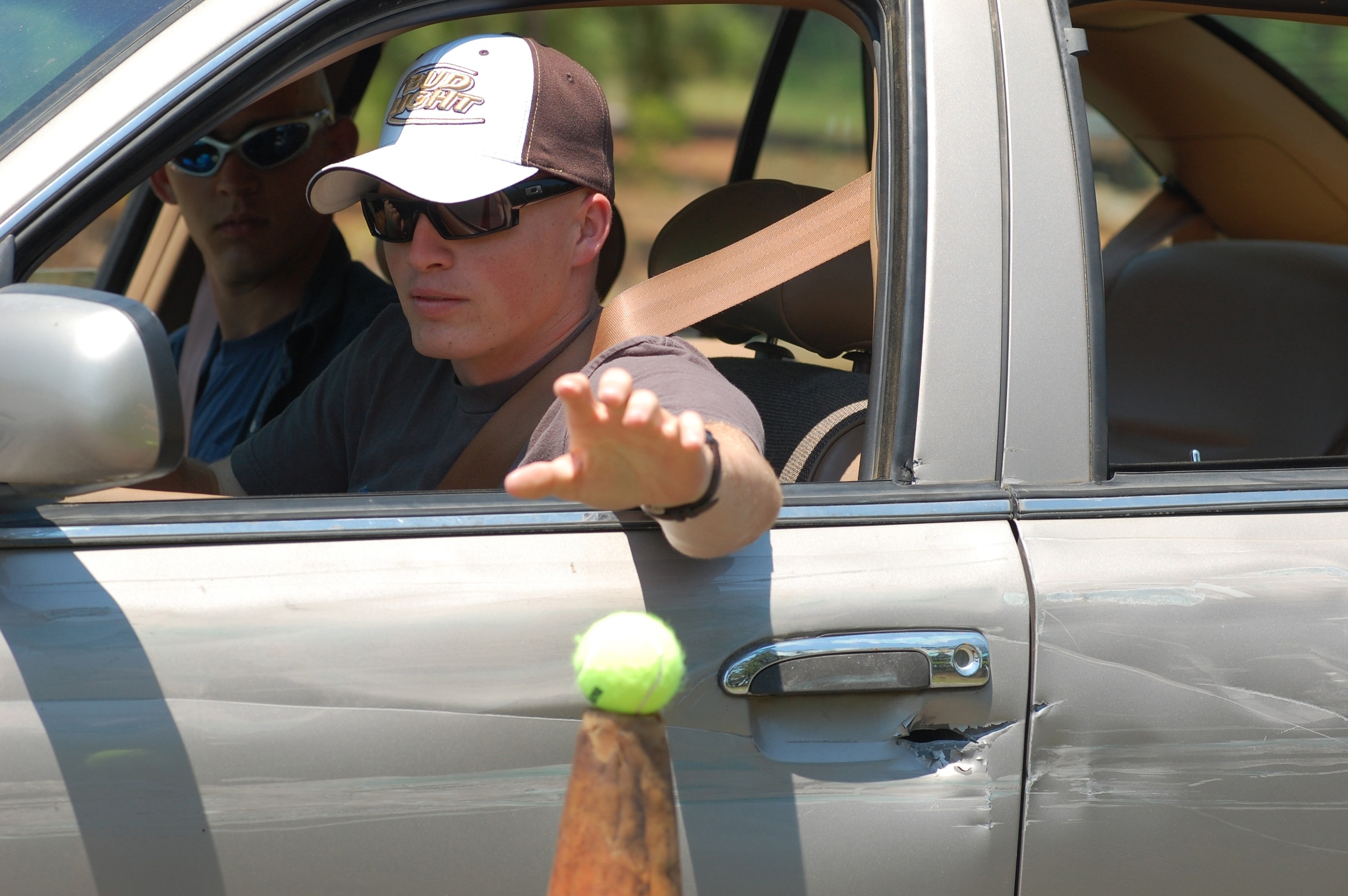FORT BRAGG, N.C. - In theater, time is everything.
From the moment danger is detected to the time spent getting everyone out of harm's way, whether it was from an explosion to a hostile situation they must be ready to evacuate, sometimes leaving little to no time to even adjust or lock their seat belts in place.
On July 17, students consisting of military police officers, Department of the Army police officers, medics and even commanders' drivers participated in a week-long course aimed at getting individuals to be more aware of their surroundings and out of the area quickly and safely, if necessary.
"The first thing people do when they get into a car is put their seat belts on," said William Welsch, Anti-Terrorism Plans and Operations, Security and Intelligence Division. "Which is good. But here (in training and real-world hostile situations) the first thing you do when you get into your car is get it started, then put your seat belt on (if you have time). You never know when you will have to get out of the spot you're in."
Welsch said in a situation where time is limited, you must be able to leave as soon possible to escape potentially dangerous situations.
One of the techniques learned during the driving portion of the training is the "shuffle" steering and the ability to look beyond the hood of a vehicle when driving.
"The average American drives peering only down to the end of their hood," he explained. "They only worry about what is directly in front of them. They don't see what is going on down the road."
Rush explained that when driving, people tend to steer their vehicles in the same direction they are watching the road.
"This is pretty good training," said Spc. Matthew D. Howell, 118th Military Police Company, after finishing the obstacle course. "(I) just wish more people could participate in this."
Sgt. 1st Class Christopher Parris agreed and added that the most important lesson he he learned was how far he can push the vehicle and maintain control in order to escape a dangerous situation.
"(This course) builds a lot of confidence in the Soldiers and the MRs that work the daily law enforcement mission," Parris said. "(It) makes us safer drivers."
Parris said by the end of the course each driver should be able to read how a car handles on the road, be able to react quickly and still have complete control of the vehicle in any situation.
Welsch said the course is not limited to being able to survive dangerous situations while driving. It also makes students aware of dangers in everyday surroundings like using operational security when using a laptop in a public place, knowing your surrounding in foreign countries or even watching what you say in restaurants.
"This course is awesome," said Sgt. John Henry Schoenmeier, 42nd Military Police Detachment, K-9 Unit. "There was a lot of stuff I never knew about ... like the pit moves and how to be a better driver in general."


Social Sharing